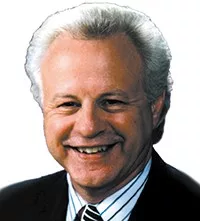Most sales people love to be active — out in their territories, seeing people, solving problems, putting deals together. This activity orientation is one of the necessary characteristics of a sales personality. A day sitting behind a desk is their idea of purgatory.
Unfortunately, this activity orientation is both a strength and a weakness. Much of a sales person's ability to produce results finds its genesis in the energy generated by this activity orientation.
But it can be a major obstacle. Far too often, sales people are guilty of going about their jobs directed by the credo of "Ready, shoot…aim.” The luxury of this kind of unfocused activity is a casualty of the Information Age. In order to be effective, sales people must be focused and thoughtful about everything they do. Activity without forethought and planning is a needless waste of time and energy.
And the most important part of the job to think about is the time they spend in front of their prospects and customers. Of all the different parts of their job, there is nothing more important to think about - nothing more important to plan — than that one thing.
For most sales people, if they were to make a list of everything they do in the course of a day, and then considered each of the items on the list, they'd likely discover that almost everything they do can be done cheaper or better by someone else within their company.
Someone else can call for appointments at a cheaper rate or in a better way than the sales person. Someone else can more easily check on back orders. Someone else can fill out a price quote, write a letter, or deliver a sample. In fact, it's likely that the only thing a sales person can do that no one else in the company can do cheaper or better is interact with the customers. It's the face-to-face interactions with customers that define the value they typically bring to the company. If it weren't for that, your company would have little use for sales people.
So, the face-to-face interaction with the customer is the core value sales people bring to the company. Yet, most studies indicate that the average outside sales person only spends about 25% to 30% of his/her work week actually face-to-face with the customer.
In the light of that, doesn't it make sense to spend some time planning and preparing to make that 25% to 30% of the week the highest quality you can possibly make it?
Of course it does.
Planning Principles
Mastery of this practice is built upon several powerful principles. Here's the first:
Good decisions require good information.
It's the Information Age, remember. And that means, if you're going to be an effective professional sales person, you must collect, store and use good information. You can't make effective plans if the information on which you build those plans is faulty or sketchy.
If you were going to build a home, for example, you'd want to know about the nature of the ground on which the home was to be built. You'd need to have a good idea about what kind of weather conditions the home would be enduring, what the building codes were, what materials were available and what they cost, and what kind of skilled workmen were required. The list could go on and on. The point is that you wouldn't be able to build a home very effectively if you didn't have good information on which to base those plans.
The same principles apply to building a home as well as delivering effective sales performances. In both cases, good planning requires good information. It may be that your company provides you all the information you need. But, it's more likely they don't. If you're going to work with good information, you must be the one who collects that information. That means that you must create systems to collect, store and use the information that will be most helpful to you. Since our world is constantly producing new information, the system you create isn't something you do once and forget. Rather, it must be a dynamic system that is constantly processing, storing and using new information.
The information-collecting process
Creating and maintaining your system is a matter of following several specific steps. Here's the process:
- Create a list of the categories of information you'd like to have.
- Working with one category at a time, brainstorm a list of all the pieces of information you'd like to have within that category.
- Develop a system and some tools to help you collect that information.
- Store it efficiently.
- Use it regularly.
STEP ONE
Start by listing the kinds of information you think will be most useful to you.
Think about your job and determine what kinds of information you'd like to have to help you deal effectively with your customers. Here's a partial list that would fit most sales people:
- Information about your customers and prospects.
- Information about your competitors.
- Information about the products, programs and services you sell.
You may have a number of other categories, but this is a basic list with which you can begin.
STEP TWO
Once you've categorized the kind of information you'd like, you can then think about what information would be ideal to have in each category.
Start at the top and work down. Look at customers and prospects first. What, ideally, would you like to know about them? Some typical pieces of information would include information about the account's total volume of products you sell, the dates of upcoming contracts, the people they are buying from and so forth. All of that seems pretty basic. However, most sales people have no systematic way of collecting and storing that information. So, while you may occasionally ask a certain customer for parts of it, you probably aren't asking every customer for all the information. And, you're probably not collecting it, storing it and referring to it in a systematic, disciplined way.
Do you think your competitors know exactly how much potential is in each of their accounts? Do you think they know other pieces of useful information, for example, how many pieces of production equipment each customer has, and the manufacturer and year of purchase of each? Probably not. If you collect good quantitative marketing information, you'll be better equipped to make strategic sales decisions and create effective plans. For example, you'll know exactly who to talk to when the new piece of equipment from ABC manufacturer is finally introduced. And, you'll know who is really ripe for some new cost-saving product that's coming, or the new program your company is putting together.
You may currently be doing a so-so job of collecting information. It's like golf. Anyone can hit a golf ball. But few can do it well. Anyone can get some information. Few sales people do it well.
STEP THREE
Develop a system and some tools.
The single most effective tool is an account profile form. It's an incredibly effective tool that generates and organizes some of the most powerful processes.
STEP FOUR
Store it efficiently.
You may have done a great job of collecting information, but if you've stored it on old matchbook covers, coffee-stained post-its and the backs of old business cards somewhere in the backseat of your car, it's probably not going to do you much good.
If you're computerized, then your computer can be the super tool that allows you to efficiently store the information. If not, you're going to need to create a set of files (yes, manila folders!) in which to store your information.
STEP FIVE
Use it regularly.
Before every sales call, review the information you have stored. That review will help you make good decisions about each aspect of the sales call. Likewise, review the information as you create your annual goals and sales plans, when you create account strategies and when you organize and plan your territories.
As you can tell, an account profile form is a master tool that holds all of this together.





